By Dan Weisz
Birders from around the country know that Arizona is a good place to see some unique birds. One of those birds is the Common Black Hawk. The species lives year round in Mexico and further south but a number of these birds migrate through southern Arizona to their summer breeding territories.
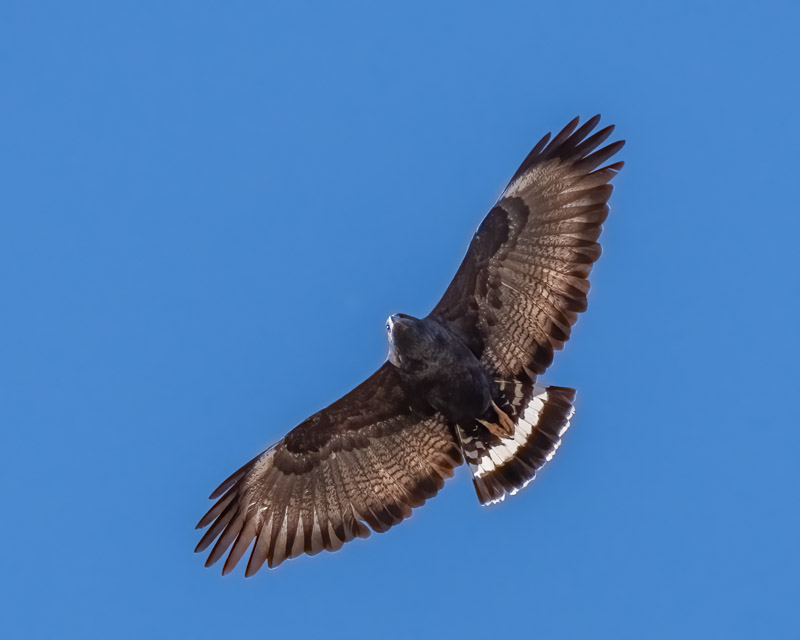
The Common Black Hawk is not very common in Arizona although it is common throughout its range in Mexico and Central/South America. Black Hawks travel north using the Santa Cruz River as their migration highway. Every year in March, a Hawk Watch happens as people gather in Ron Morriss Park in Tubac to observe Black Hawks and other raptors making their way back north to their summer homes.
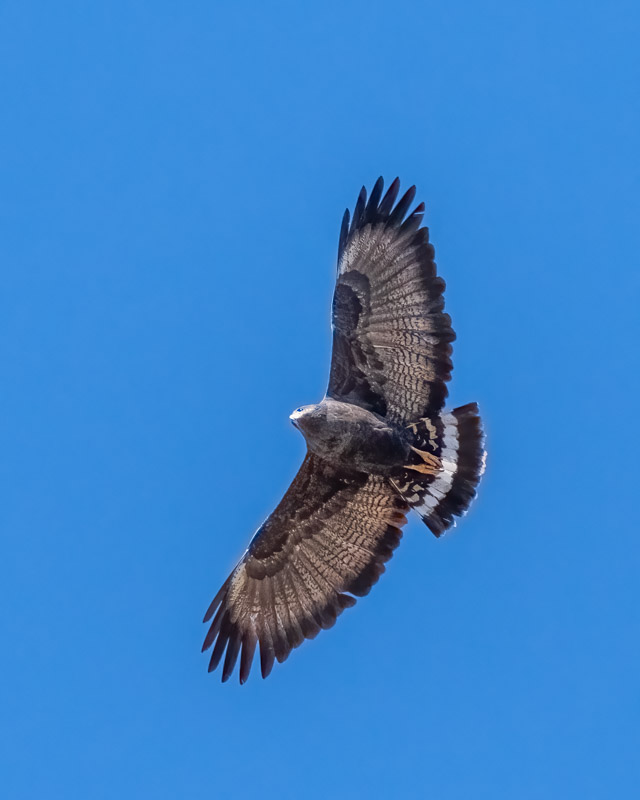
The map below lets you see the limited range of Common Black Hawks in the United States. If you want to see a Black Hawk in the US, come to southern Arizona:
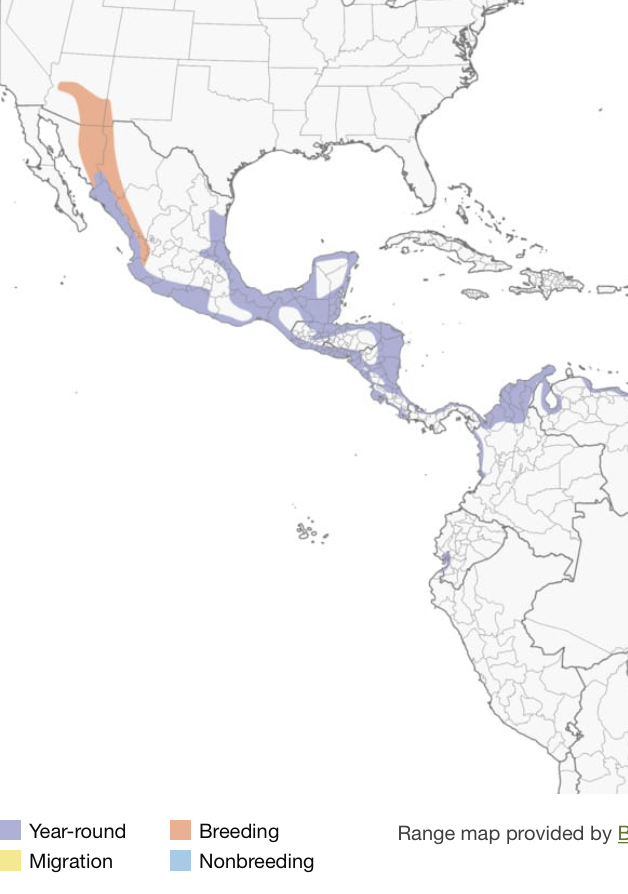
The Black Hawks make their migration over a period of time. They fly during the day, and then alight in the riparian areas along their route for the evening, only to continue their migration the following day. Black Hawks, like other migrating raptors, conserve their energy while flying. They use uplifts of wind along mountain ranges and thermals- columns of hot rising air- to gain lift. If possible, raptors prefer ’sailing’ along the wind currents rather than having to expend energy flapping their wings. In the shot below, the Black Hawk has tucked in its wings to gain speed. It might have sensed less lift where it was and was speeding up to another “faster” moving stretch of air ahead.
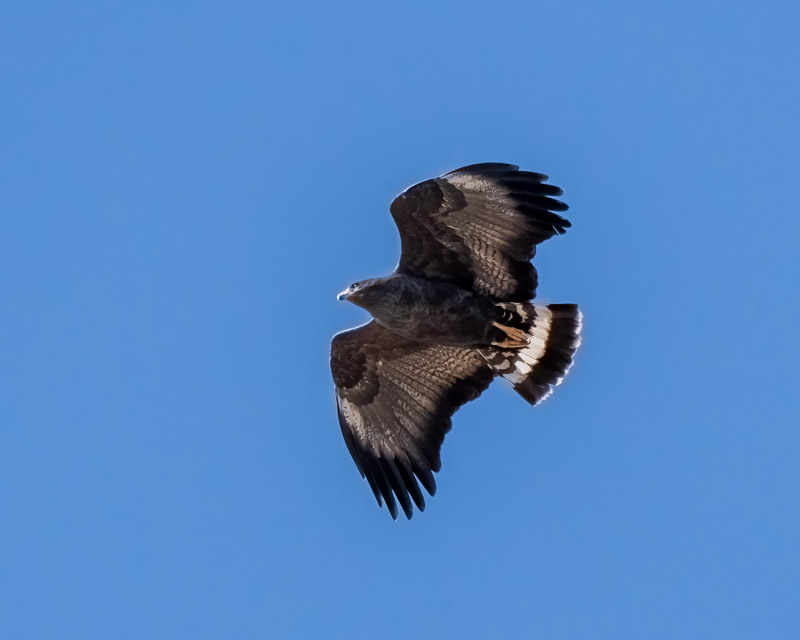
Common Black Hawks have been described as a ’soot-looking’ bird with broad wings. They have yellow legs and bills and a broad white band across their tail. The photo below shows a bird spreading its tail so that it acts as a third wing, helping to give the bird more lift in the air.
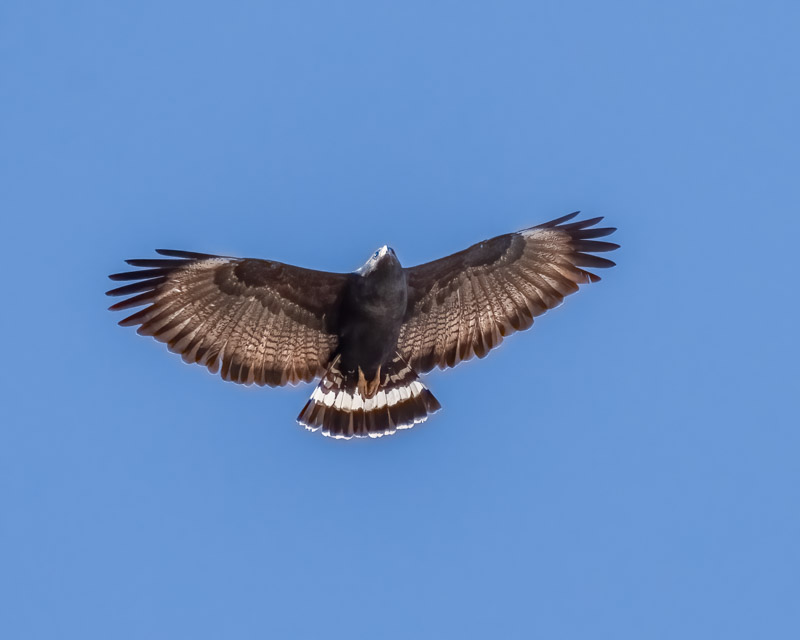
As the Black Hawk turns in the sky, you can see how broad the wings are, cutting a very different profile than most other raptors.
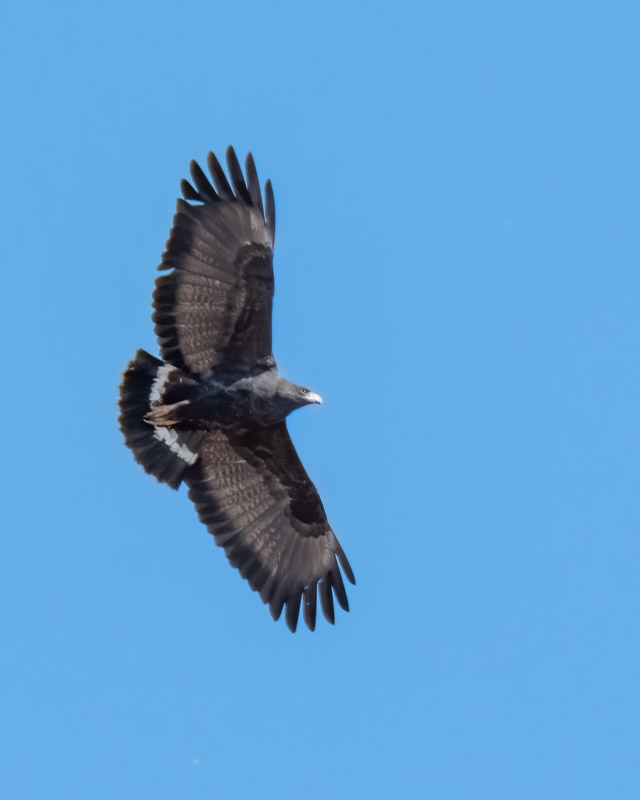
Coming directly at me, this Black Hawk shows a different look.
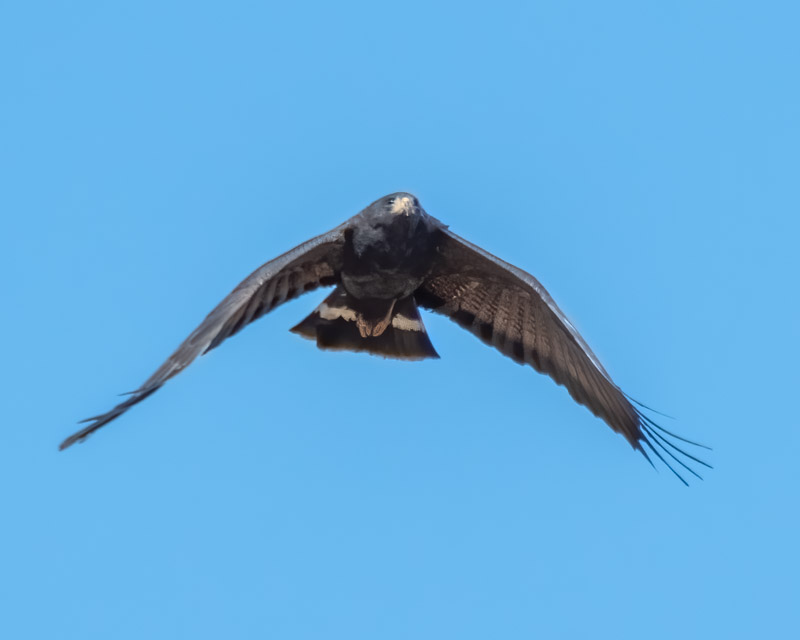
It was low enough to appear almost straight ahead. The raptor spread its wings and began to turn towards the north.
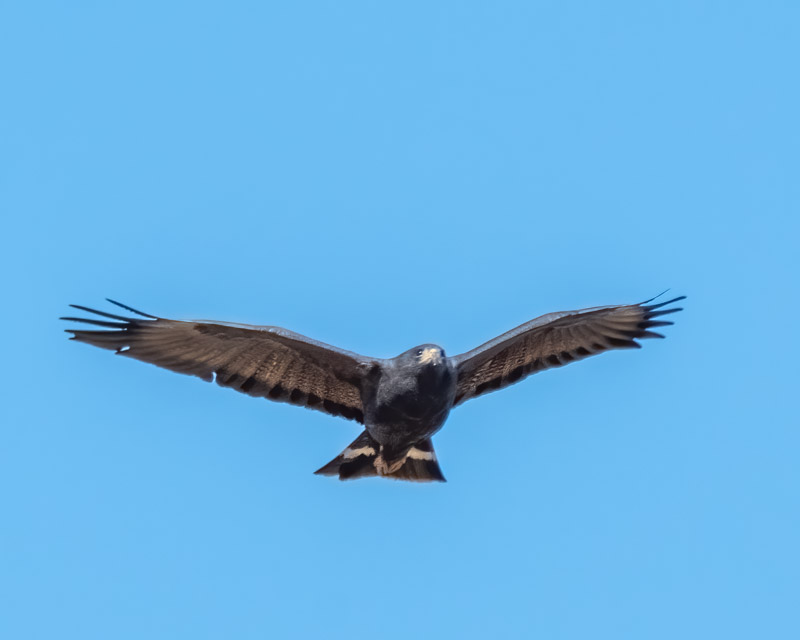
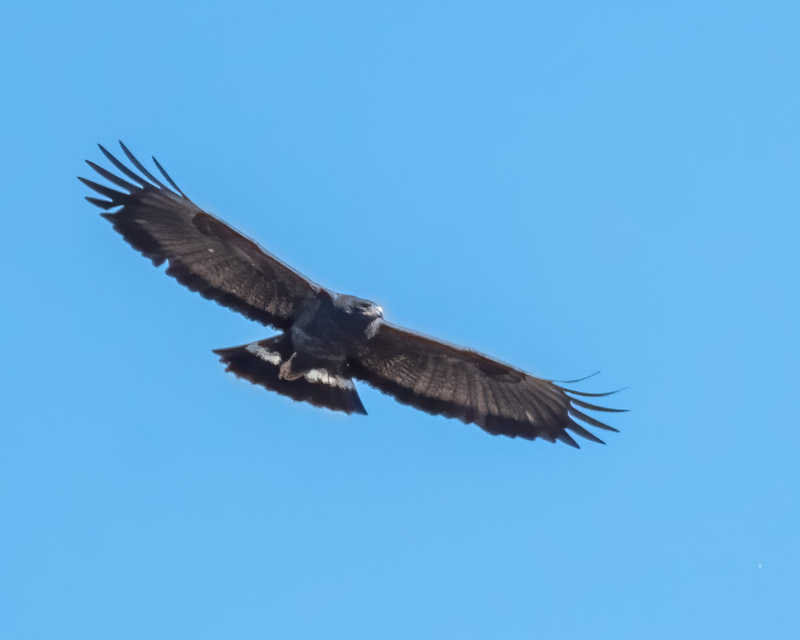
I spent two mornings in Tubac along the Santa Cruz River. Both of those days were among those with the highest number of migrating Black Hawks. There were well over 100 people in the park each morning waiting for the birds to appear and travel overhead on their way north.
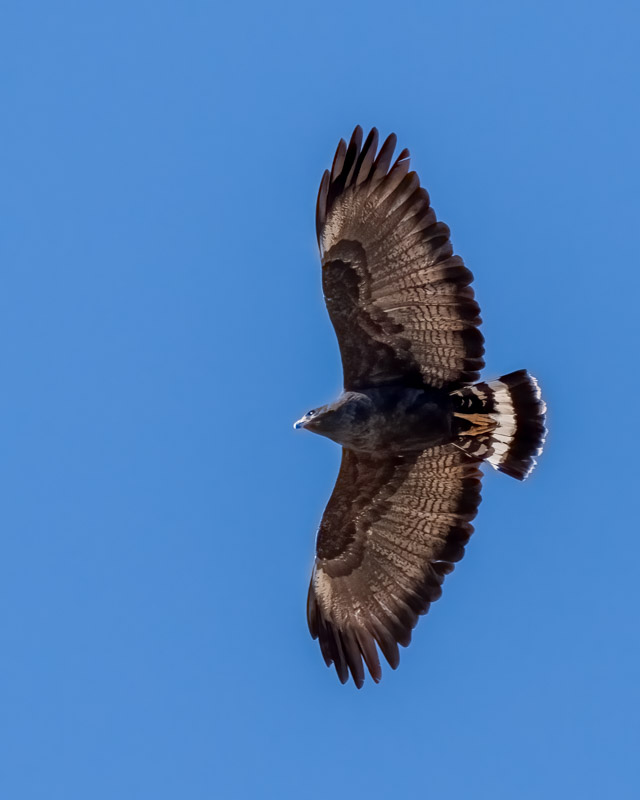
One bird circled over the park several times working to catch rising air from the field. As it turned, we got some looks at the back of the Black Hawk. Even with the name “Black” hawk, it has more of an ashen or sooty look to it. I like the grace of the upturned tips of its wings in this shot.
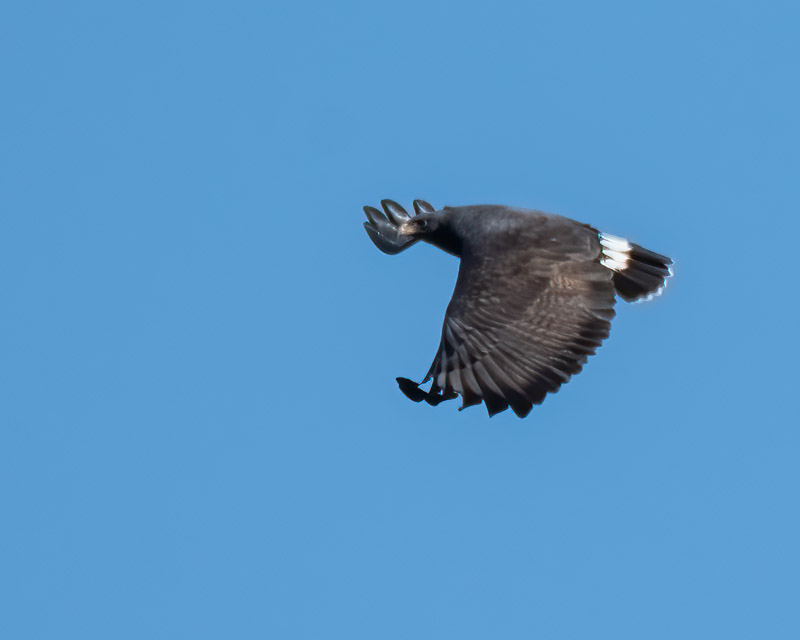
Here is another look at the back of a turning Black Hawk. These birds will seek a nesting territory in a thickly riparian area over a shallow, flowing stream. Black Hawk’s preferred prey is aquatic although they also feed on land based insects, reptiles and small mammals.
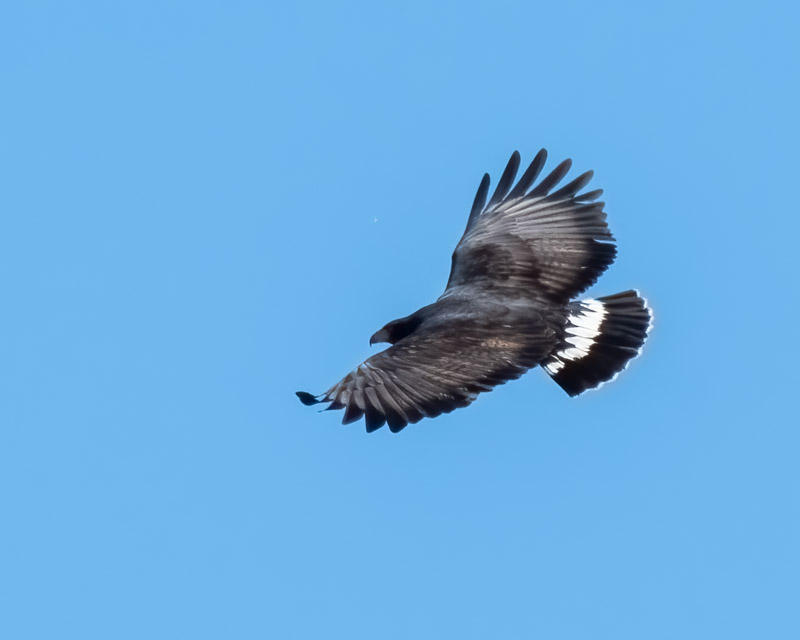
Another turning bird shows one wing in sunlight and one in shadows.
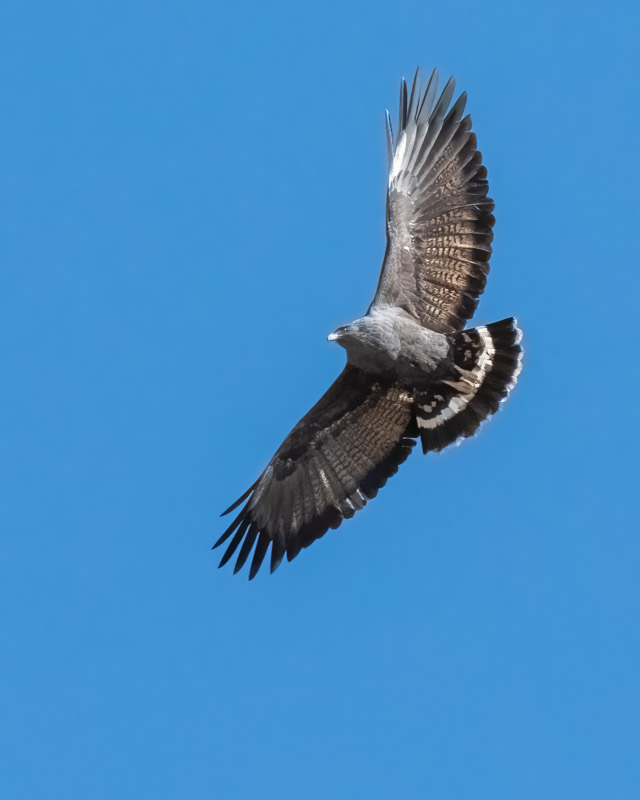
The photo below is from a different angle. The Black Hawk looks very determined and focused here. For information on Hawk Watches in general, Birdnote shares a bit about them: https://www.birdnote.org/listen/shows/hawkwatch
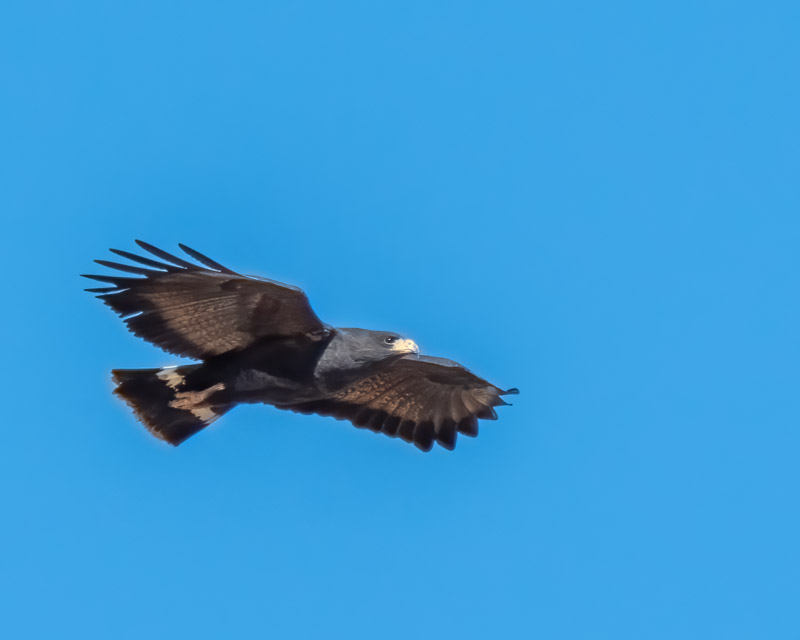
For information on the Hawk Watch in Tubac, check out the Tubac Nature Center page for an update. If it is too late to consider this year, put this on your calendar for the beginning of March 2023 and plan for a visit next year! https://tubacnaturecenter.com/hawk-watch
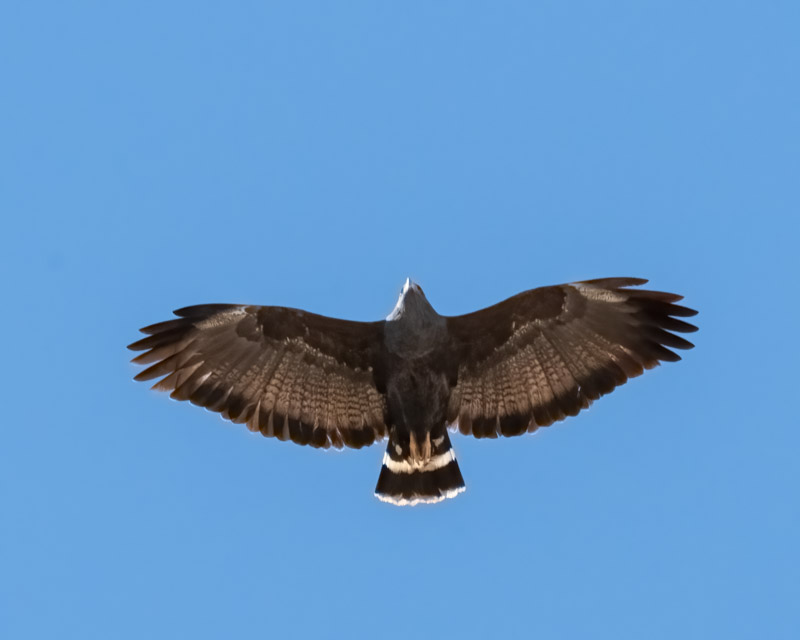
I stayed until about 11:30 each of my two mornings out there. This Black Hawk appears to be waving good-bye to me. Perhaps I am imagining things.
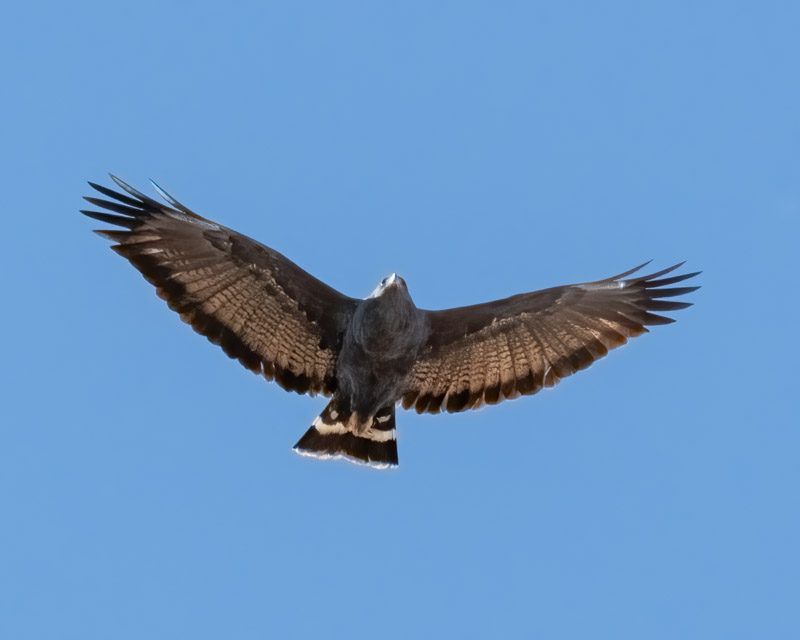
In addition to the Common Black Hawks, there were other birds that flew over. Some were too far away for me to see even with my binoculars. Better birders with better eyes saw more birds. Some were visible and a few were close enough for me to photograph. To get a sense of the other species that migrated over us, check out the link to the Tubac Nature Center above. To see a few of those other bird species that I photographed, wait for the next posting coming to you soon!!
